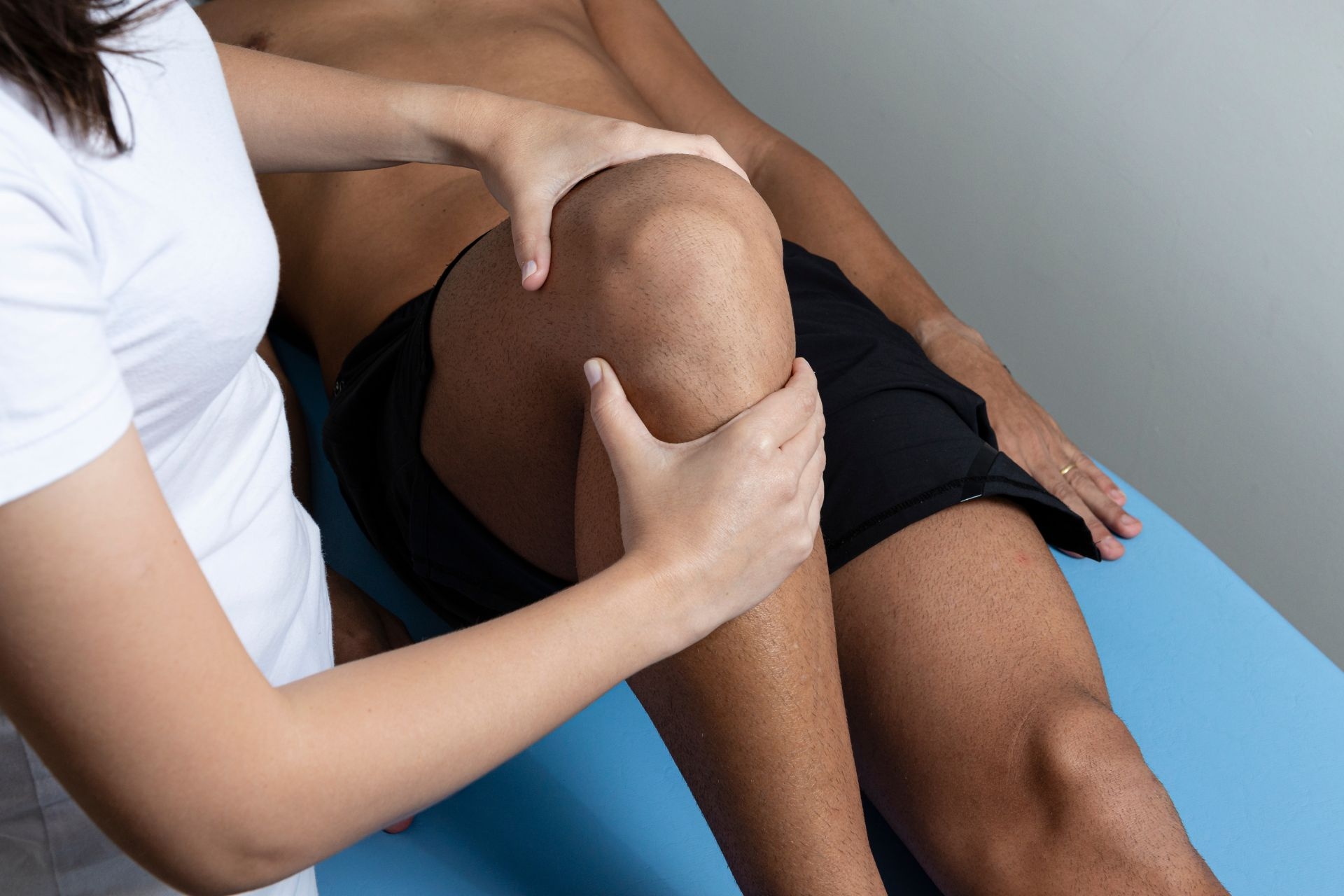

Carpal tunnel syndrome is a condition that affects the hand and wrist, causing a variety of symptoms. The most common symptoms include numbness, tingling, and pain in the hand and fingers, particularly the thumb, index, middle, and ring fingers. These symptoms often occur at night and can radiate up the arm. Individuals with carpal tunnel syndrome may also experience weakness in the hand and a decreased ability to grip objects. These symptoms can be disruptive to daily activities and can worsen over time if left untreated.
Carpal tunnel syndrome is typically diagnosed through a combination of medical history, physical examination, and diagnostic tests. A healthcare professional will first assess the individual's symptoms and medical history to determine if carpal tunnel syndrome is a likely cause. They will then perform a physical examination, which may include tests to assess sensation, strength, and range of motion in the hand and wrist. In some cases, additional diagnostic tests such as nerve conduction studies or electromyography may be ordered to confirm the diagnosis and assess the severity of the condition.
By Professional Physical Therapy A healthy heart is the cornerstone of overall well-being, and taking proactive steps to maintain cardiovascular health is crucial for a long and vibrant life. This is a particularly important message because heart disease is the leading cause of death in our country. The good news is that many causes of … Continued The post 7 Essential Tips to Keep Your Heart Healthy appeared first on Professional Physical Therapy.
Posted by on 2024-01-15
By Professional Physical Therapy Professional Physical Therapy, a leading provider of outpatient physical therapy and rehabilitation services throughout New York, New Jersey, Connecticut, Massachusetts, and New Hampshire, announces the opening of a new state-of-the-art clinic in the heart of Dyker Heights, NY on January 2, 2024. This marks their third clinic opening in Brooklyn and … Continued The post Professional Physical Therapy Announces New Clinic Opening in Dyker Heights, NY appeared first on Professional Physical Therapy.
Posted by on 2024-01-15
By Professional Physical Therapy Professional Physical Therapy, a leading provider of outpatient physical therapy and rehabilitation services throughout New York, New Jersey, Connecticut, Massachusetts, and New Hampshire, announces the opening of a new state-of-the-art clinic in Livingston, NJ on January 2, 2024. Even more patients in New Jersey will have greater access to the clinical … Continued The post Professional Physical Therapy Opens New Clinic in Livingston, NJ appeared first on Professional Physical Therapy.
Posted by on 2024-01-15
By Professional Physical Therapy As Professional Physical Therapy proudly marks a remarkable milestone of 25 years in the realm of healthcare and wellness, we find ourselves reflecting on the journey that brought us here. To encapsulate the essence of this celebration, we wanted to connect with our co-founder and many of our team members who … Continued The post Celebrating 25 Years at Professional Physical Therapy appeared first on Professional Physical Therapy.
Posted by on 2023-12-27
There are several risk factors that can increase the likelihood of developing carpal tunnel syndrome. These include repetitive hand and wrist movements, such as typing or using tools, which can put strain on the median nerve that runs through the carpal tunnel. Other risk factors include certain medical conditions such as diabetes, rheumatoid arthritis, and thyroid disorders, as well as hormonal changes during pregnancy. Additionally, factors such as obesity, smoking, and a family history of carpal tunnel syndrome may also increase the risk.

Treatment options for carpal tunnel syndrome can vary depending on the severity of the condition. In mild cases, conservative treatments may be recommended. These can include wearing a wrist splint to keep the wrist in a neutral position, taking over-the-counter pain medications, and making ergonomic adjustments to workstations or tools. Physical therapy exercises and stretches may also be prescribed to improve flexibility and strengthen the hand and wrist. In more severe cases, corticosteroid injections or surgery may be recommended to relieve pressure on the median nerve and alleviate symptoms.
While it may not be possible to completely prevent carpal tunnel syndrome, there are steps that can be taken to reduce the risk. Maintaining good posture and ergonomics while working or performing repetitive tasks can help minimize strain on the hand and wrist. Taking regular breaks to rest and stretch the hands and wrists can also be beneficial. It is important to avoid repetitive motions and to vary tasks when possible. Additionally, managing underlying medical conditions and maintaining a healthy lifestyle can help reduce the risk of developing carpal tunnel syndrome.

There are several exercises and stretches that can help alleviate symptoms of carpal tunnel syndrome. These exercises typically focus on stretching and strengthening the muscles and tendons in the hand and wrist. Examples of exercises include wrist flexion and extension, finger stretches, and thumb opposition exercises. It is important to perform these exercises under the guidance of a healthcare professional or physical therapist to ensure proper technique and to avoid exacerbating symptoms. Regularly incorporating these exercises into a daily routine can help improve flexibility and reduce pain associated with carpal tunnel syndrome.
The recovery time after carpal tunnel syndrome surgery can vary depending on the individual and the specific procedure performed. In general, it may take several weeks to several months for a full recovery. Immediately following surgery, the hand and wrist will be immobilized with a splint or cast to promote healing. Physical therapy exercises and stretches may be prescribed to gradually regain strength and range of motion. It is important to follow post-operative instructions and attend follow-up appointments to monitor progress and ensure proper healing. The healthcare professional will provide guidance on when it is safe to resume normal activities and return to work.

The specific protocols for using MSKUS (Musculoskeletal Ultrasound) in assessing shoulder impingement involve a systematic approach to evaluating the various structures involved. The examiner should start by assessing the bony structures, including the acromion, coracoid process, and humeral head, looking for any abnormalities or signs of impingement. Next, the examiner should evaluate the rotator cuff tendons, including the supraspinatus, infraspinatus, and subscapularis, for any signs of inflammation, tears, or thickening. The subacromial-subdeltoid bursa should also be assessed for any signs of inflammation or fluid accumulation. Additionally, the examiner should evaluate the long head of the biceps tendon for any abnormalities. Dynamic assessments, such as the Neer and Hawkins-Kennedy tests, can also be performed using MSKUS to reproduce symptoms and assess impingement. Overall, a comprehensive evaluation using MSKUS can provide valuable information about the structures involved in shoulder impingement and aid in accurate diagnosis and treatment planning.
MSKUS, or musculoskeletal ultrasound, can be a valuable tool in evaluating abnormalities in bone alignment. By utilizing high-frequency sound waves, MSKUS can provide detailed images of the musculoskeletal system, including bones, joints, and surrounding soft tissues. This imaging technique allows for the assessment of bone alignment and can help identify any deviations or abnormalities. MSKUS can detect conditions such as fractures, dislocations, and malalignments, providing valuable information for diagnosis and treatment planning. Additionally, MSKUS can be used to monitor the progress of bone alignment during the healing process. Overall, MSKUS is a non-invasive and effective method for evaluating bone alignment abnormalities, offering valuable insights for healthcare professionals.
MSKUS, or musculoskeletal ultrasound, can be an effective tool in diagnosing piriformis syndrome. This imaging technique allows for the visualization of the piriformis muscle and surrounding structures, providing valuable information about any abnormalities or inflammation present. By using MSKUS, healthcare professionals can assess the size, shape, and integrity of the piriformis muscle, as well as identify any impingement or compression of the sciatic nerve. Additionally, MSKUS can help differentiate piriformis syndrome from other conditions that may present with similar symptoms, such as lumbar radiculopathy or hip joint pathology. Overall, MSKUS can play a crucial role in the accurate diagnosis of piriformis syndrome, guiding appropriate treatment strategies and improving patient outcomes.
MSKUS, or musculoskeletal ultrasound, offers several benefits for assessing sports-related injuries. Firstly, it provides real-time imaging of the musculoskeletal system, allowing for immediate visualization of soft tissues, tendons, ligaments, and joints. This enables accurate diagnosis and evaluation of injuries such as sprains, strains, and tears. Additionally, MSKUS is non-invasive and does not involve exposure to ionizing radiation, making it a safe imaging modality for athletes. It also allows for dynamic assessment, meaning that the ultrasound can be performed during movement or stress tests, providing valuable information about the injury's impact on function and performance. Furthermore, MSKUS is portable and readily available, making it a convenient tool for sports medicine professionals to use on the field or in the clinic. Overall, MSKUS offers a comprehensive and efficient approach to assessing sports-related injuries, aiding in timely diagnosis, treatment planning, and monitoring of athletes' recovery progress.
MSKUS, or musculoskeletal ultrasound, can be highly beneficial for evaluating enthesopathy. Enthesopathy refers to the inflammation or degeneration of the entheses, which are the sites where tendons or ligaments attach to bones. MSKUS allows for the visualization of these structures in real-time, providing detailed information about the integrity and abnormalities of the entheses. By using high-frequency sound waves, MSKUS can detect changes in the thickness, echogenicity, and vascularity of the enthesis, which are important indicators of enthesopathy. Additionally, MSKUS can assess the surrounding soft tissues, such as bursae and synovial sheaths, providing a comprehensive evaluation of the affected area. Overall, MSKUS is a valuable tool in the diagnosis and monitoring of enthesopathy, allowing for early detection and appropriate management of this condition.